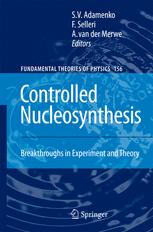

Most ebook files are in PDF format, so you can easily read them using various software such as Foxit Reader or directly on the Google Chrome browser.
Some ebook files are released by publishers in other formats such as .awz, .mobi, .epub, .fb2, etc. You may need to install specific software to read these formats on mobile/PC, such as Calibre.
Please read the tutorial at this link: https://ebookbell.com/faq
We offer FREE conversion to the popular formats you request; however, this may take some time. Therefore, right after payment, please email us, and we will try to provide the service as quickly as possible.
For some exceptional file formats or broken links (if any), please refrain from opening any disputes. Instead, email us first, and we will try to assist within a maximum of 6 hours.
EbookBell Team

4.3
18 reviewsThis book ushers in a new era of experimental and theoretical investigations into collective processes, structure formation, and self-organization of nuclear matter. It reports the results of experiments wherein for the first time the nuclei constituting our world (those displayed in Mendeleev's table as well as the super-heavy ones) have been artificially created. Pioneering breakthroughs are described, achieved at the "Proton-21" Laboratory, Kiev, Ukraine, in a variety of new physical and technological directions.
A detailed description of the main experiments, their analyses, and the interpretation of copious experimental data are given, along with the methodology governing key measurements and the processing algorithms of the data that empirically confirm the occurrence of macroscopic self-organizing processes leading to the nuclear transformations of various materials. The basic concepts underlying the initiation of self-sustaining collective processes that result in the formation of nuclear structures are also examined.
How to realize nucleosynthesis of stable nuclei in the laboratory? Why are metallic meteorites of iron or nickel-iron? Could the iron be nuclear fuel and could an iron star blow up as a supernova? And what could be the energy source of such an explosion? Is it possible to obtain nuclear energy from any terrestrial substance without producing radioactivity? Do super-heavy (Migdal's) nuclei exist, and is it possible to synthesize them in the laboratory? What physical mechanisms could one use to control nuclear transformations and particularly the sign of the overall energy balance involved?
Answers to these and other intriguing questions are to be found in this book.
Audience:
University and research libraries, scientists and researchers, other professionals, lecturers, and graduate students